8 of the best Scottish islands for rugged coastlines and picturesque villages
Sail away from the mainland to explore spectacular scenery and diverse wildlife in these unspoiled spots
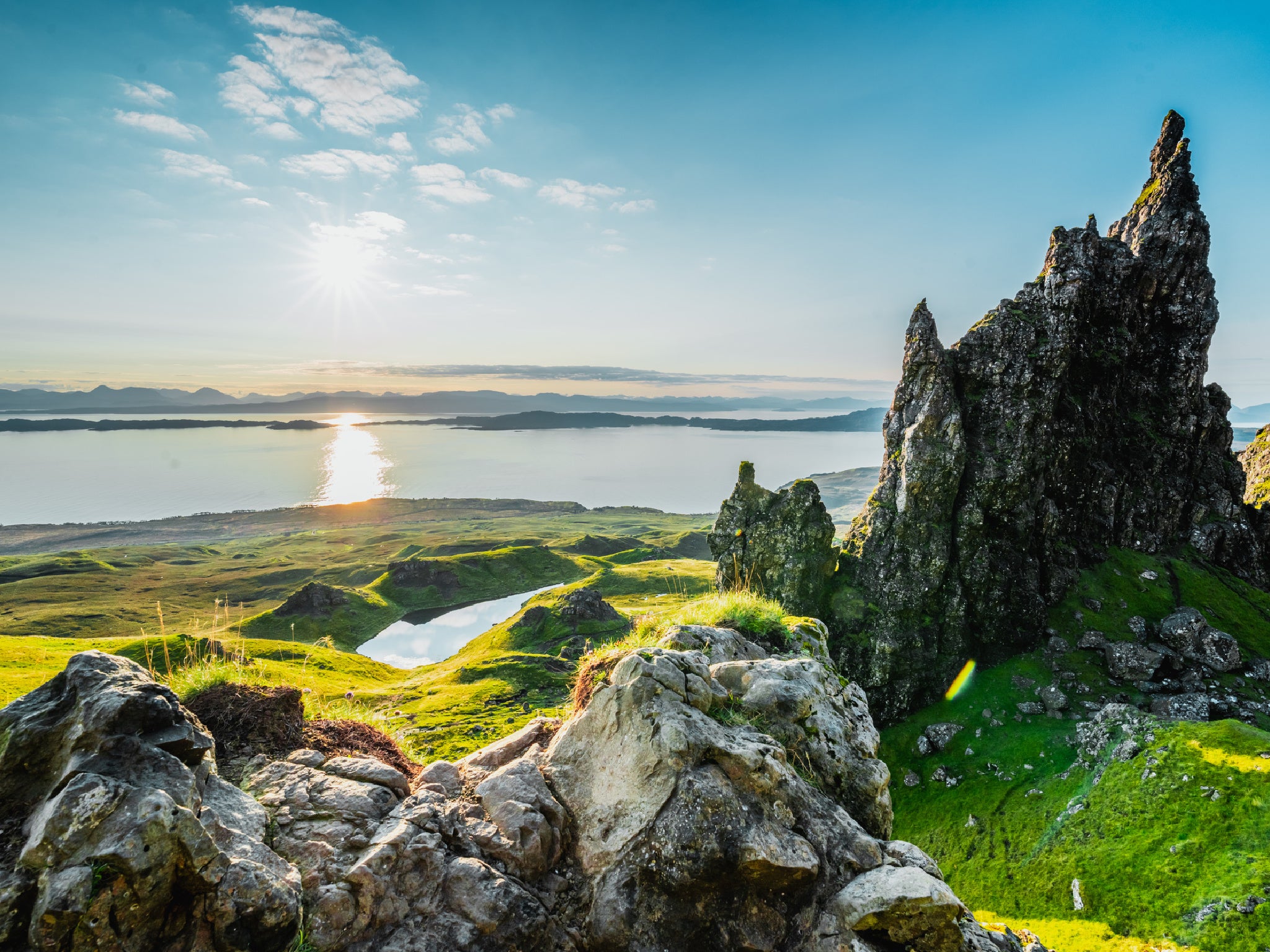
You don’t need to fly for hours to explore an island paradise. Scotland’s islands offer a kaleidoscope of experiences, from dramatic coastlines to ancient standing stones and charming villages –and most of them can be reached by boat from the mainland.
But with 93 inhabited islands scattered across Scotland’s rugged coastline, choosing which one to visit can be a difficult decision.
They’re all very different, with some offering the solitude of windswept beaches where you can kayak with otters, and others giving you the chance to tour whisky distilleries and learn how Scotland’s famous spirit is made. History buffs may be drawn to islands dotted with housing structures built in the neolithic period, or around 4,000BC.
To help you decide where to go, here are eight of the most beautiful islands that have plenty to offer travellers looking for something a little bit different for their next adventure. Whether you’re a walker, foodie or an wildlife spotter, you’ll find an island to suit your interests here.
Islay
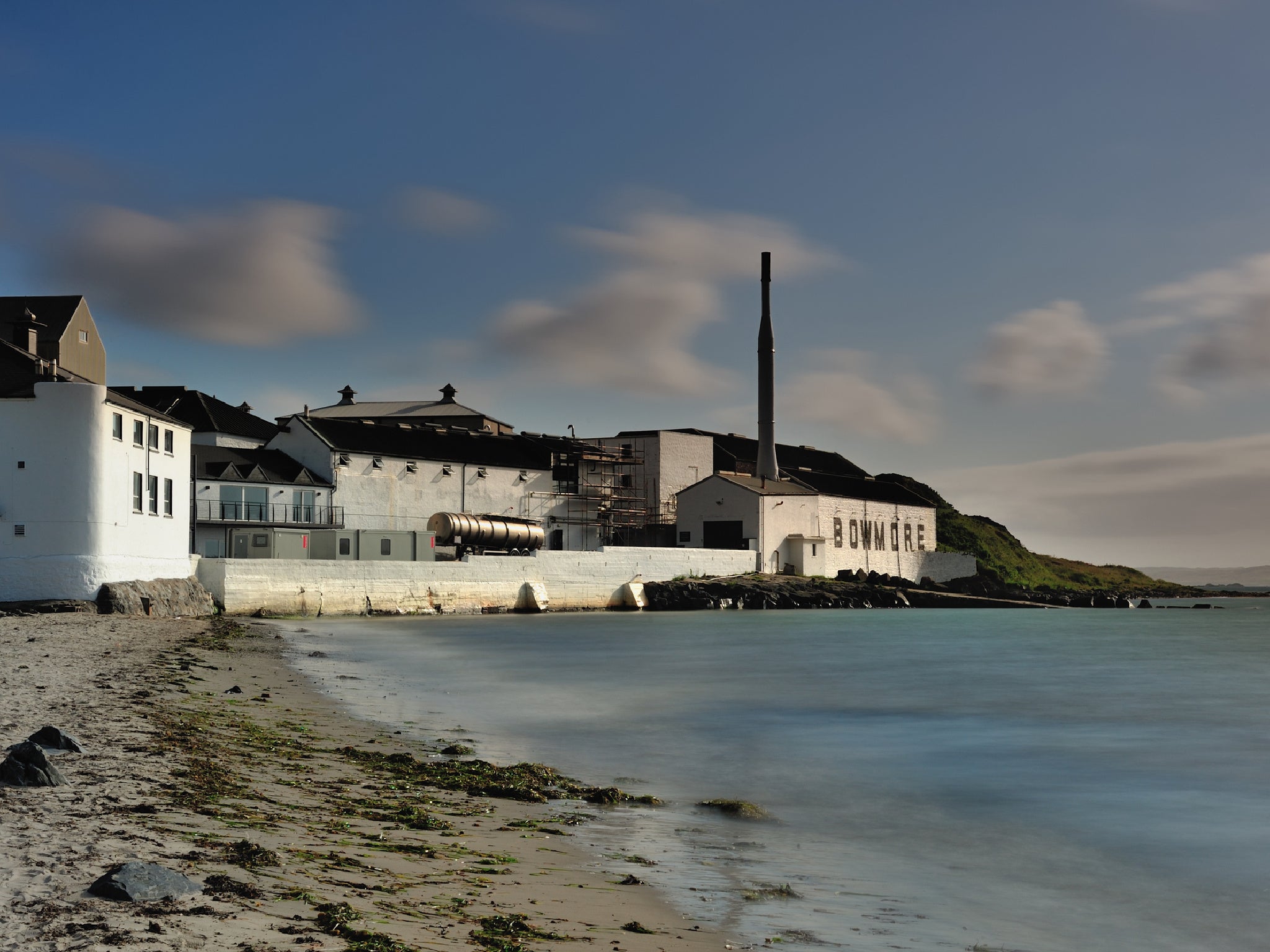
The Isle of Islay, sometimes referred to as the “Queen of the Hebrides” is famous for its whisky. There are nine working distilleries within 240 square miles. Near Port Ellen in the south of the island are three of the biggest distilleries — Laphroaig, Lagavulin and Ardbeg — which are all within a mile of each other, so you can do a whisky walk that takes you to all three. Each May, the island hosts a 10-day festival aimed at whisky lovers with distillery open days and special tastings.
Read more on Scotland travel:
Islay is blessed with several key ingredients for crafting world-class scotch. Its abundant freshwater springs provide the perfect base, while it’s landscape is dominated by peat bogs. Peat not only fuels the kilns that smoke the barley, but also lends the whisky its characteristically smoky flavor – a signature trait of Islay single malts.
How to get there
Reaching Islay is an adventure in itself. Take a CalMac ferry ride from Kennacraig on the mainland, enjoying breathtaking views of the Scottish coastline. Alternatively, hop on a short Loganair flight from Glasgow for a bird’s-eye view of the scattered islands.
Where to stay
Within stumbling distance of the Bowmore distillery, or 210m to be precise, the Lochside hotel offers a comfortable place to stay after whisky-tasting. It has a restaurant overlooking the sea serving fresh seafood and most bedrooms have sea views.
Mull
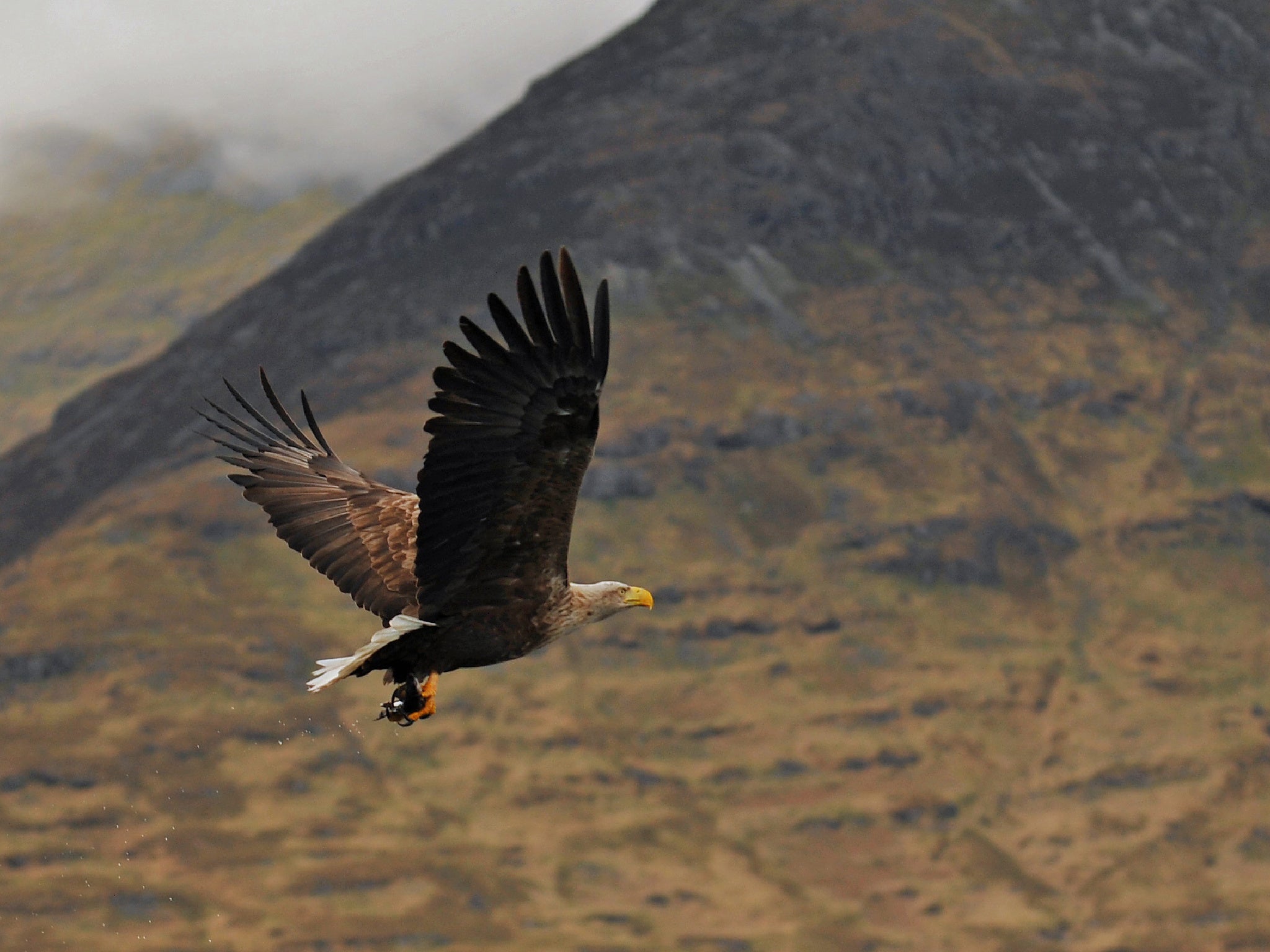
If you like to admire wildlife in its natural habitat, Mull is the place to walk (or sail) alongside some truly magnificent creatures. The second-largest island of the Inner Hebrides is home to a thriving population of white-tailed eagles – they’re the UK’s largest bird of prey and the fourth-largest eagle in the world. Mull also has the highest population of nesting golden eagles in Europe, which can often be seen soaring over the island’s remote glens, moorland and mountains. From the water, you can kayak next to otters or whale-watch between June and September. For history lovers, the picturesque capital Tobemory, with its brightly painted houses, is home to a museum full of exhibits giving insight into ancient life on the island.
How to get there
The most direct route to Mull is by CalMac ferry from Oban, which drops you at Craignure. The journey takes less than 50 minutes. If you are in the Fort William area or heading to Mull from the North, you can take the Corran Ferry across Loch Linnhe and then drive to Lochaline, before getting the ferry across to Mull.
Where to stay
The dog-friendly Bellachroy hotel is Mull’s oldest inn, established in 1608 as a waypoint for drovers. Situated in the village of Dervaig, it provides a tranquil escape from the bustle of Tobermory, yet it’s only eight miles away, so close enough for day trips.
Iona
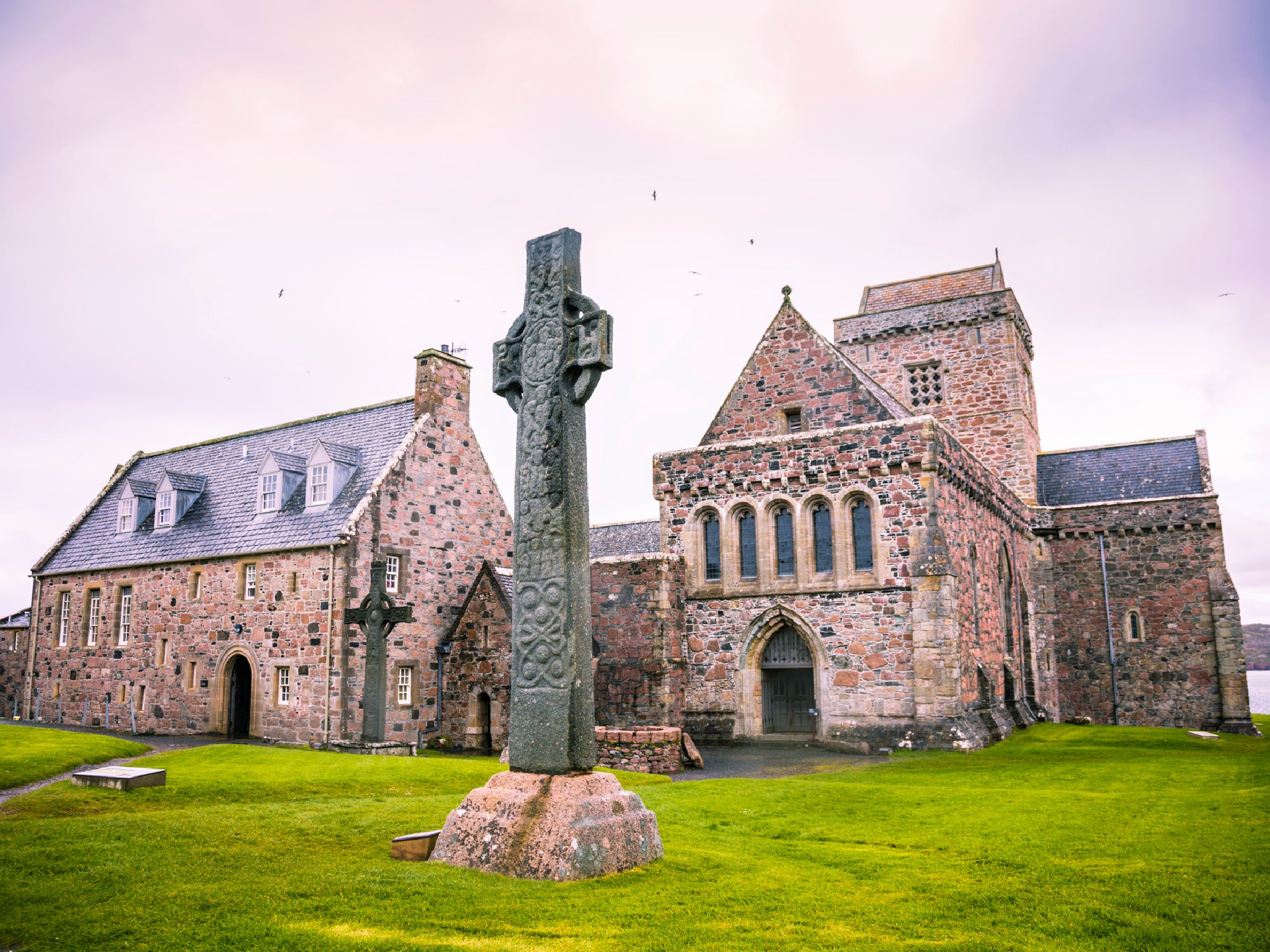
One of Scotland’s smaller islands is home to a huge amount of royal and religious history. Famed as the “Cradle of Christianity in Scotland,” St. Columba arrived on Iona in 563AD and founded a monastery, sparking the spread of Christianity throughout Scotland and beyond. The haunting ruins of Iona Abbey can be explored to this day with Celtic crosses whispering tales of faith and perseverance. Or step into the tranquility of St Oran’s Chapel, said to be the oldest surviving religious building in Scotland, and Reilig Odhráin, an ancient cemetery rumored to hold the remains of Scottish kings like Macbeth. Around 60 kings are thought to be buried in the Iona Abbey burial grounds.
How to get there
The first stage in getting to Iona is to sail to the Isle of Mull. Calmac ferries from the mainland will take you to Craignure on the East coast of Mull but he Iona ferry departs from Fionnphort at the southwestern tip of Mull. It’s an hour’s drive between the two places or you can get the 96/496 secheduled bus services from Craignure to Fionnphort, with timetables available on the West Coast Motors website.
Where to stay
There isn’t much choice of accommodation on Iona, but if you’re looking for a quiet place to stay you can stay in a pod on a working croft. Each pod consists of a single open space with a double bed or two single beds. They’re a 12-minute walk from Iona Abbey and include complimentary wifi.
Skye
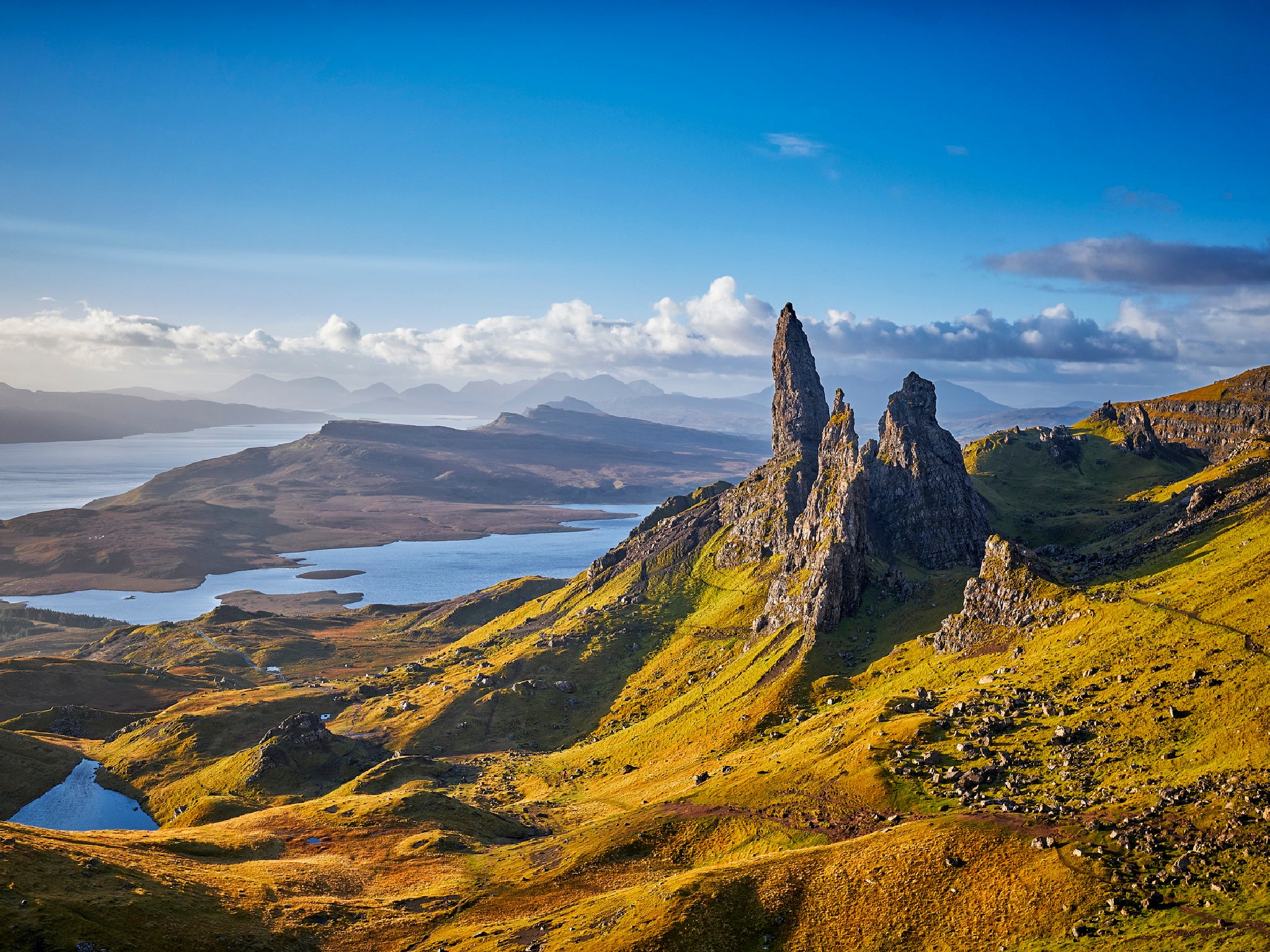
For keen walker and hikers, Skye offers hundreds of scenic routes with natural beauty to dazzle the senses. Dramatic landscapes, such as the jagged Cuillin mountains and the iconic rock formations of the Old Man of Storr, offer challenging terrains for the advanced adventurer but there also plenty of flat routes. Near Glenbrittle, natural rock formations have created crystal-clear pools fed by crashing waterfalls, known as the Fairy Pools.
With such a diverse landscape, it’s little wonder that you can also spot a lot of wildlife if you keep your eyes open. Watch red deer wandering through the grass or look up for majestic birds like hen harriers and whimbrels. Take a boat trip around the island and you could meet dolphins, otters, sea eagles, puffins seals and even whales.
How to get there
To reach the Isle of Skye, there’s a direct train from Glasgow to Mallaig, which takes around five hours, or you could drive to Mallaig. From here the CalMac ferry to Armadale in Skye takes between 30–45 minutes, depending on the tide. Another option is driving further north to Kyle of Lochalsh and cross to Skye via the bridge.
Where to stay
For a luxury stay on Skye, Duisdale House is an upmarket family-run boutique hotel that welcomes dogs. Each room of the former hunting lodge is traditionally decorated with views sweeping out to sea. After a day’s hiking, the hotel restaurant’s double AA rosette-winning cuisine will help you refuel thanks to a menu packed with hearty dishes made from local produce.
Eigg
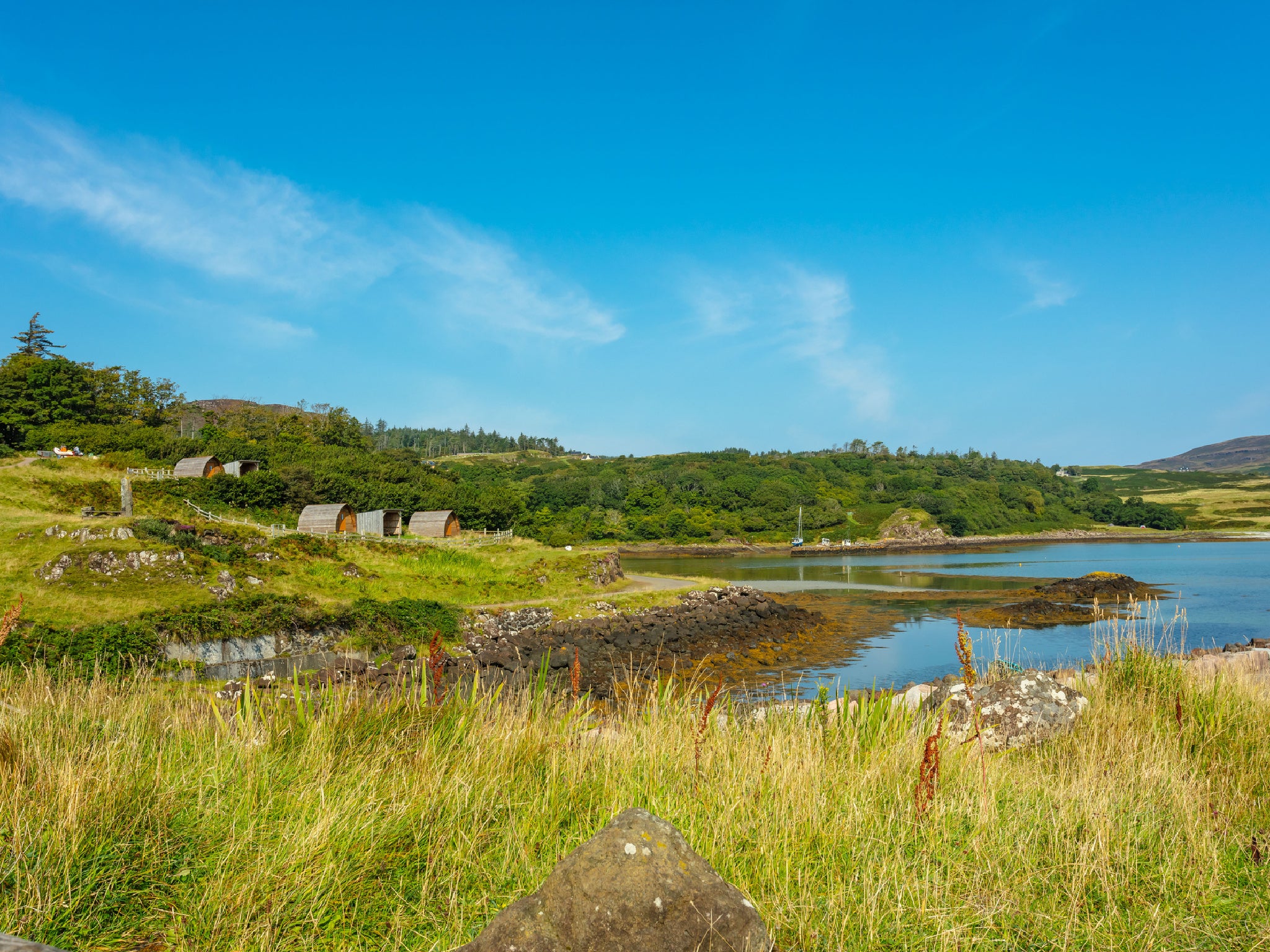
Located 10 miles off the west coast of Scotland, Eigg is often referred to as the “Island of Flowers’’ due to the 500 different types of plants and moss found there, more than 20 of which are protected species. In spring and summer, the island’s landscapes burst into vibrant color, with blooms like orchids, primroses, bluebells and thrift carpeting the ground; the Scottish Wildlife Trust offers a guided 90-minute walk around the most beautiful spots every Monday between June and late September, as well as a nature walk every Wednesday. The island’s mild climate coupled with the Gulf Stream makes for a longer flowering season than on the mainland. The air is also extremely fresh and unpolluted, with Eigg is one of the first island’s in the world to be powered solely by renewable energy sources. The island’s own off-grid energy system is powered by wind, water and the sun.
How to get there
To get to the Isle of Eigg, you catch a CalMac ferry from Mallaig, which is on the West Highland train line, 41 miles from Fort William or 164 miles from Glasgow. The ferry is for foot passengers only as as cars cannot be taken onto Iona.
Where to stay
There are three camping pods handily located close to Galmisdale Bay, the main hub of Eigg. Each sleeps up to four and has views of the harbour where seals and otters play. Prices from £60 a night.
Orkney Islands
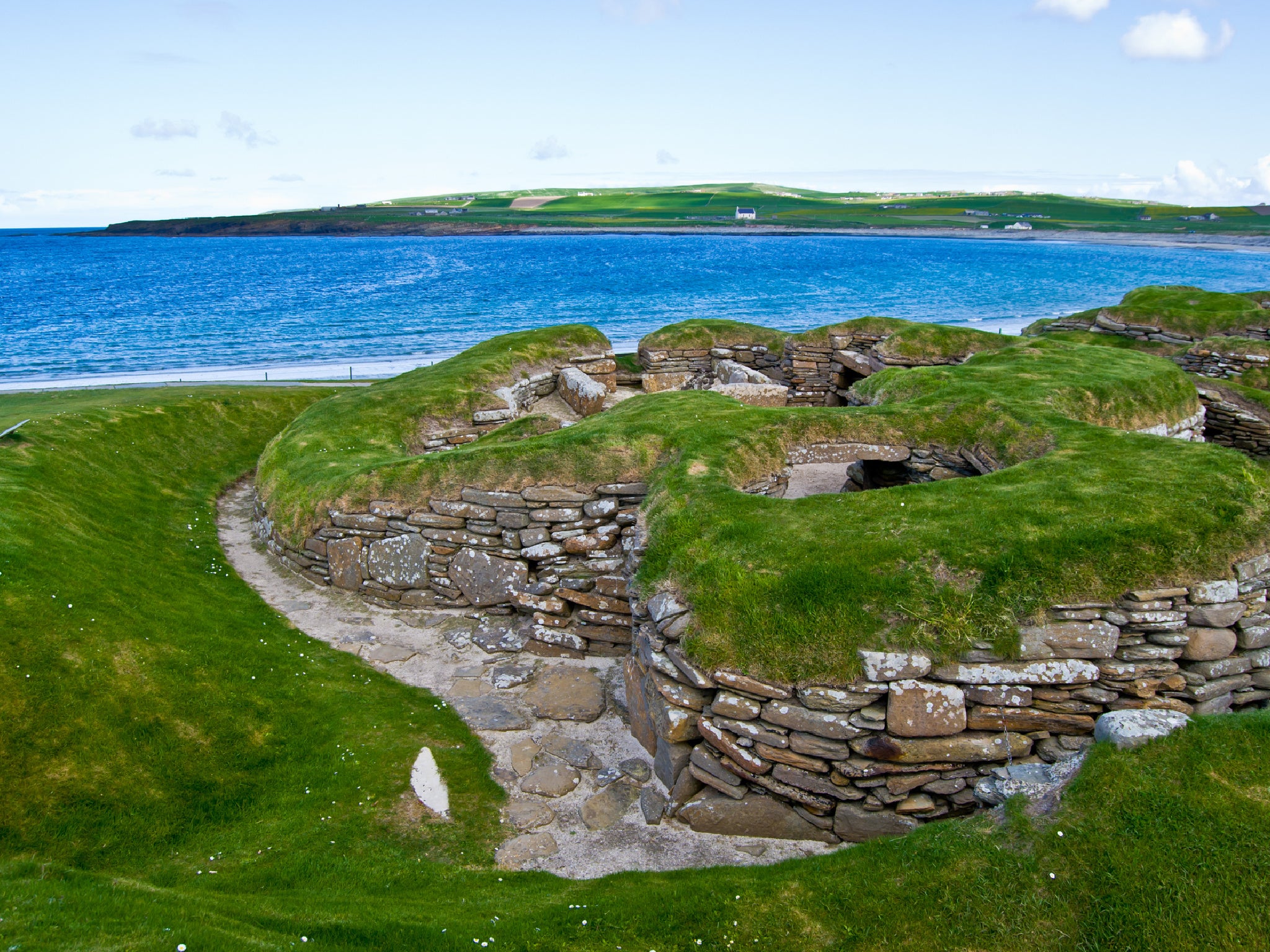
The Orkney Islands, located off the northern coast of Scotland, will almost transport you to ancient times. The archipelago is home to neolithic structures that are older than Stonehenge. The brilliantly preserved coastal village at Skara Brae is on the Unesco World Heritage list, and there’s also a circle and henge at Brodgar and vaulting stones at Stenness. Fascinated by the Vikings? Orkney is home to St Magnus Cathedral, which was founded in 1137 by a Viking, Earl Rognvald, in honour of his eponymous martyred uncle. Modern history buffs can learn about World War history at the Scapa Flow Museum or visit the imposing Churchill Barriers, causeways built to defend against Nazi invasion.
How to get there
The fastest way to reach Orkney is by flying. Daily flights operate from major Scottish cities like Edinburgh, Glasgow, Aberdeen, and Inverness to Kirkwall Airport, Orkney’s main airport. The flight duration is usually around an hour. North Link ferries operate from Aberdeen and Scrabster (near Thurso) to Stromness, Orkney. The journey from Scrabster takes approximately 90 minutes, while the trip from Aberdeen is around six hours.
Where to stay
Looking out across the harbour of the Orkney Islands’ largest town, The Kirkwall Hotel features a high-quality restaurant and bar along with stylish en suite rooms. Celebrate a day of exploring with local ale or whisky in the hotel’s harbourside bar.
Arran
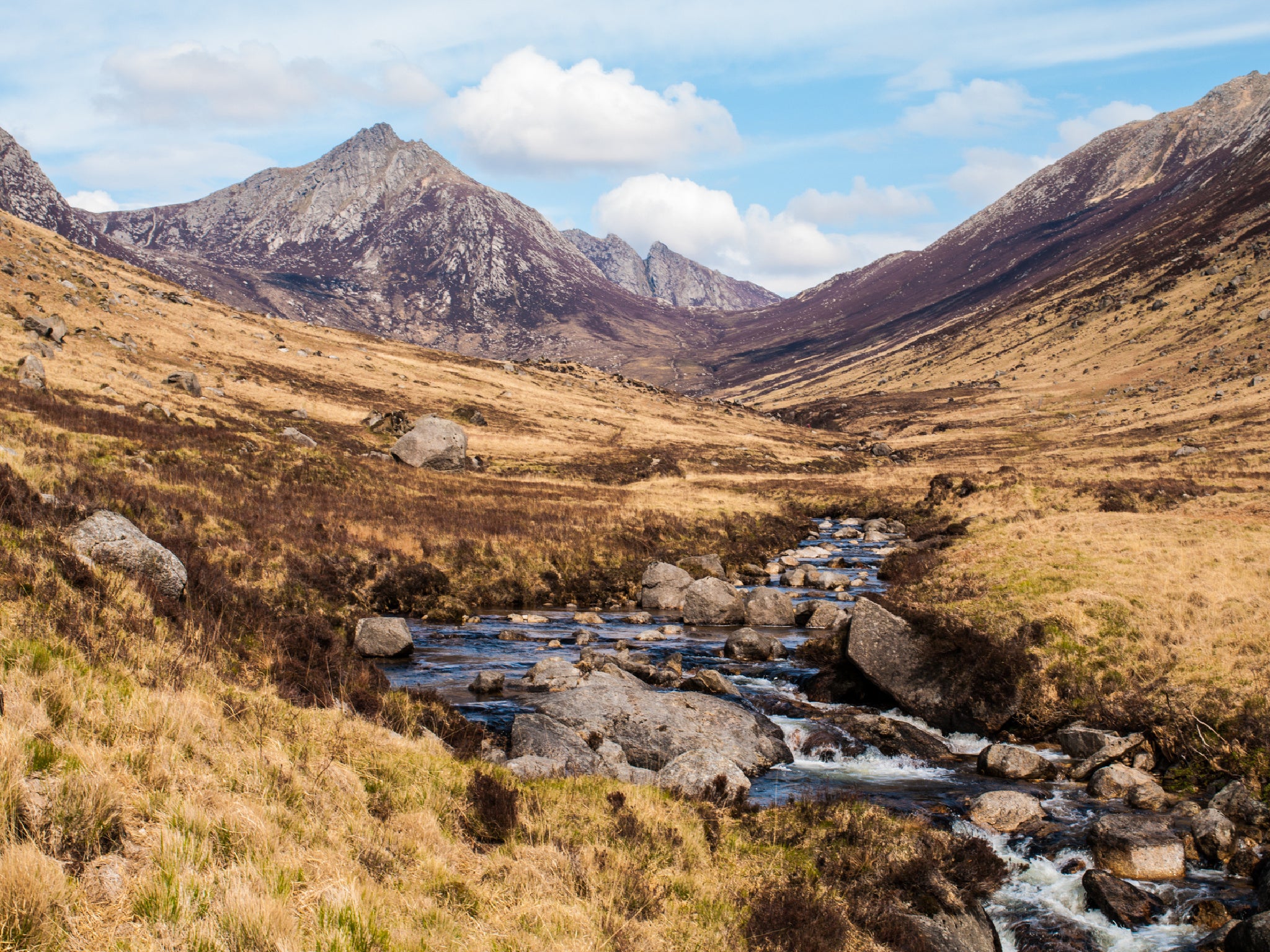
Relatively easy to get to from both Edinburgh and Glasgow, Arran is often called “Scotland in minature” because it has a variety of landscapes, including mountains, hills, forests, beaches, and glens. The island is home to several tour companies catering for outdoor enthusiasts, offering rock climbing, cycling tours or kayaking. You can also try your hand at golf at the renowned Shiskine Golf Club for a quirky 12-hole course played among cliffs and rock faces. Book a tee time online from £29.
Arran is also a haven for foodies, with fresh lobster and crab served in many local restaurants and pubs. Arran Cheese Shop sells everything from traditional cheddars to cheese made with interestig flavours like whisky and mustard.
How to get there
There are three Calmac ferry routes to Arran. You can take the ferry from Ardrossan to Brodick, which takes 55 minutes. Vehicle reservations are recommended on these routes. You can travel from Claonaig in Kintyre to Lochranza, at the north end of Arran, which takes 30 minutes. You can also travel from Troon to Brodick, from March 29 up to and including August 28.
Where to stay
Situated a two-minute walk from the Arran ferry terminal, the four-star Douglas hotel offers panoramic views over Brodick Bay. It has a bistro serving up classic Scottish dishes made with home-grown and local ingredients.
Tiree
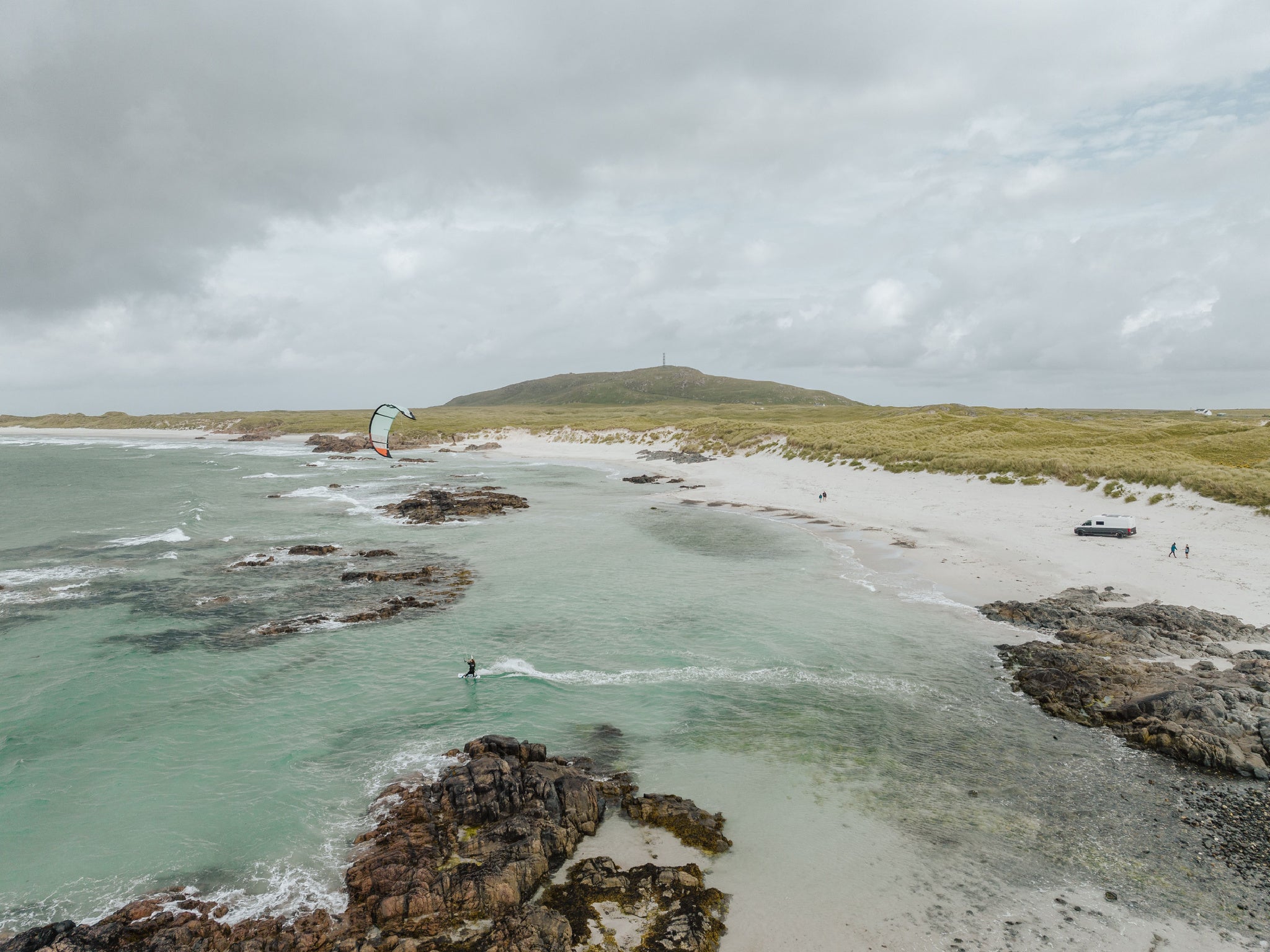
Known as the “Hawaii of the North”, Tiree benefits from more hours of sunshine than anywhere else in the British Isles thanks to its position in line with the Gulf Stream that blows warm air across the Atlantic. With stunning beaches and clear turquoise waters, Tiree is a haven for watersports enthusiasts, especially surfers, windsurfers, and kitesurfers. Balevullin beach, on the west coast, has a vast expanse of pristine white sand to relax on as well as a surf school catering for all levels of ability.
How to get there
The island boasts an airport with several flights a day from Oban and Glasgow, takin you over stunning highlands. If you want to take your car or van and surfboard with you, a CalMac ferry from Oban to Tiree takes four hours.
Where to stay
The Scarnish beach hotel is a family-run hotel on the east coast of the island. All 10 roooms were fully refurbished in 2021, making them modern but comfortable. Sip on a morning Nespresso in the room while enjoying a view out to sea. Dogs are welcome.
Read more of our best Isle of Skye hotels
Join our commenting forum
Join thought-provoking conversations, follow other Independent readers and see their replies
Comments
Bookmark popover
Removed from bookmarks